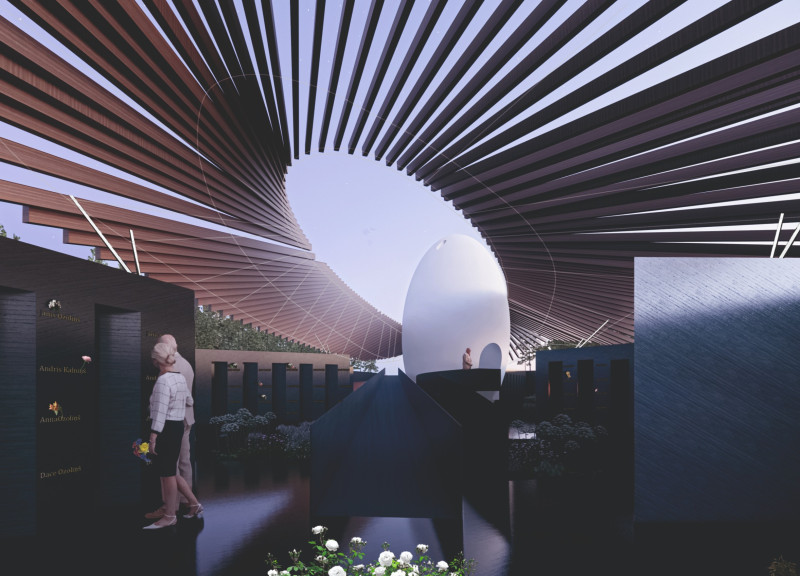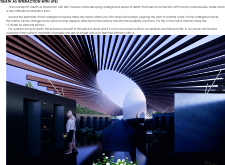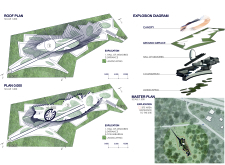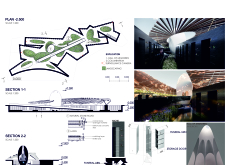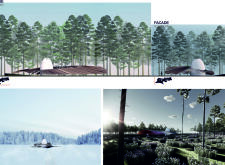5 key facts about this project
The building features an underground layout where visitors engage with personal memorials set within niches that line the interior walls. The form of the structure above ground manifests an undulating canopy of wooden slats, allowing natural light to filter into the space while providing a sense of shelter. The use of reinforced concrete ensures stability and durability in the subterranean environment, while materials such as natural stone create pathways that connect the building to the surrounding landscape. The refined choice of materials fosters a serene ambiance, enhancing visitor experiences as they navigate the spaces.
Unique Design Approaches
A key element of this project is its innovative use of architectural symbolism. The flow of the structure, shaped like an egg, signifies rebirth and continuity, distinguishing it from conventional memorial designs. This metaphor extends to the visitor experience, where pathways lead individuals on a reflective journey, evoking the stages of grief. The canopy design not only provides shelter but also mirrors the fluidity of life and nature, encouraging visitors to contemplate their relationship with the departed in a tranquil environment.
The spatial organization of niches allows for personalized commemorative practices, providing visitors with dedicated areas for reflection, thereby fostering a sense of intimacy and connection. The Hall of Memories serves as a central communal area where individuals can come together to share experiences while maintaining the opportunity for personal reflection. This dual function further differentiates the project from standard memorial architecture that often prioritizes solitude over community interaction.
Integration with Natural Landscape
The architectural design connects seamlessly with its natural surroundings, reinforcing the project’s thematic focus on life and memory. Landscape features, including carefully chosen flora and stone pathways, provide a calming atmosphere that complements the physical structure. The relationship between the building and its environment enhances the overall experience, inviting visitors to engage with both the architecture and the landscape.
This design effectively blurs the boundaries between built form and nature, allowing for a contemplative journey that resonates on personal and collective levels. For those interested in understanding the full scope of "Death as Interaction with Life," detailed architectural plans, sections, and design concepts are available for review, providing a comprehensive view of this thoughtful exploration of memory and architecture.


